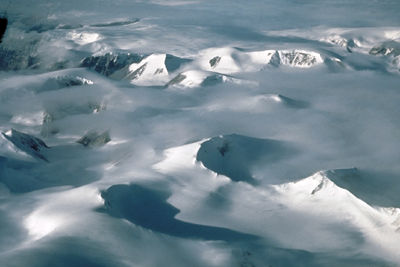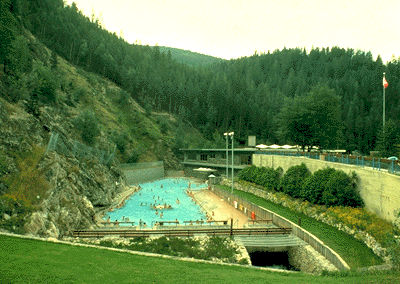Located on the Cumberland Peninsula of Baffin Island, Nunavut, Auyuittuq National Park (established 2001, 19 089 km 2) was Canada's first national park located north of the Arctic Circle. It was first set up as a national park reserve in 1976 and established as a national park through the Nunavut Land Claims Agreement.
Natural History
Auyuittuq ("the land that never melts") is a harsh land of barren tundra, jagged mountain peaks, deep fjords and ice. The Penny Ice Cap covers over 25% of the park's area. Vegetation is sparse, although in the brief arctic summer flowers such as white mountain avens, yellow arctic poppy and purple saxifrage colour the sand. Land-based wildlife is not abundant; herbivores, including arctic hare, lemming and a few barren-ground caribou, are preyed upon by wolves, arctic fox and weasel. The coastal waters on the north side of the park reserve, however, are teeming with life. The coast is home for millions of seabirds. Glaucous gulls, fulmars and black guillemots nest on sheer cliffs. Polar bears, seals, walrus, beluga and narwhals patrol the icy coastal waters.
Human History
Stone-age Dorset people lived here over 2500 years ago. Norse explorers visited but did not linger. In the 12th century ancestors of the present Inuit arrived. These Thule people hunted whales and caribou. English explorers arrived in 1585, but contact with European culture was not established until the mid-1800s, when whalers set up shore stations on the coast of Baffin Island.
Facilities
From April to July, the glacier-carved peaks and the Akshayuk Pass hiking route challenge wilderness enthusiasts. Access to the park reserve is by private outfitter's boat, snowmobile or by hiking or skiing from the communities of Pangnirtung or Qikiqtarjuaq.

 Share on Facebook
Share on Facebook Share on X
Share on X Share by Email
Share by Email Share on Google Classroom
Share on Google Classroom





